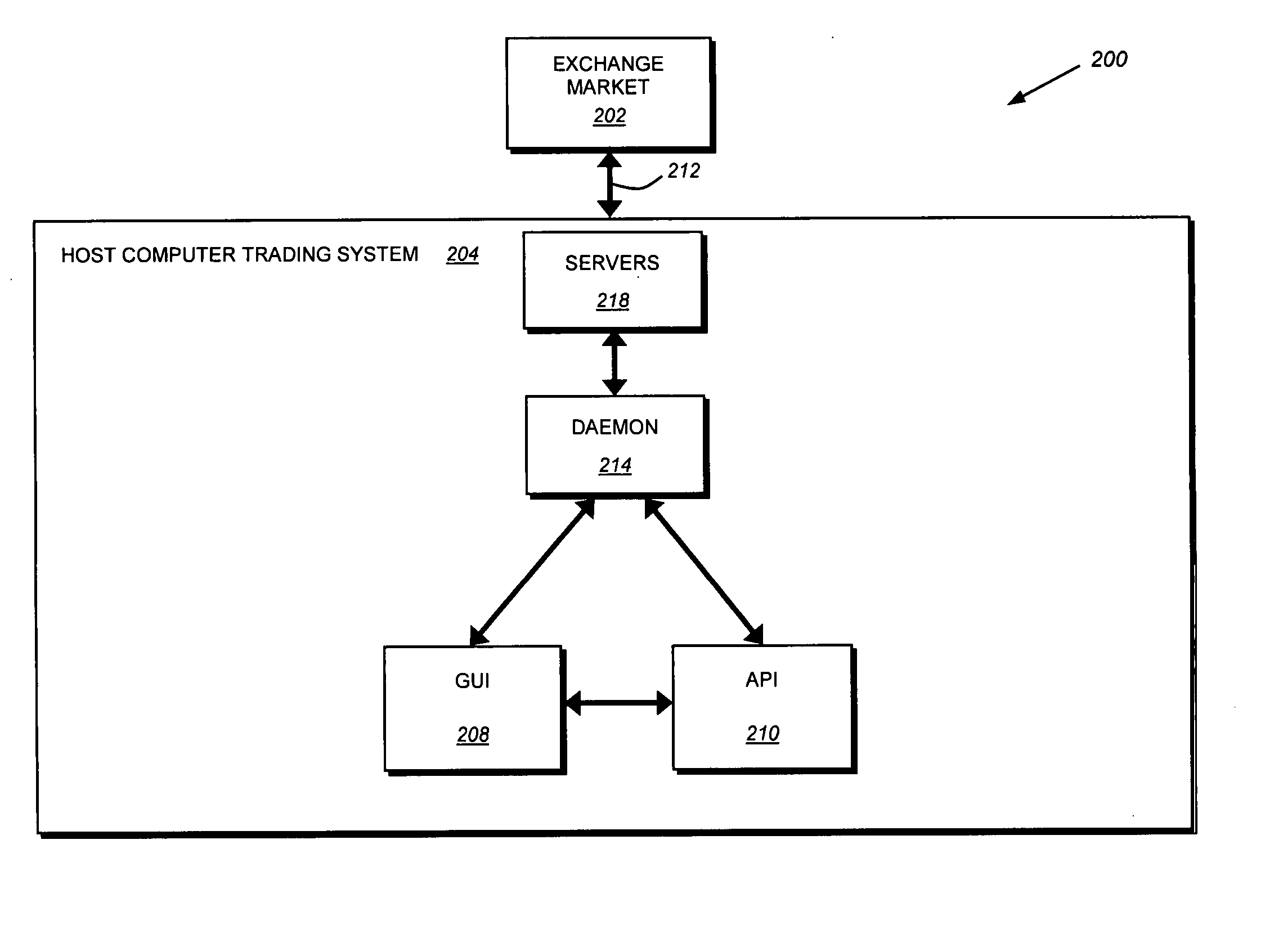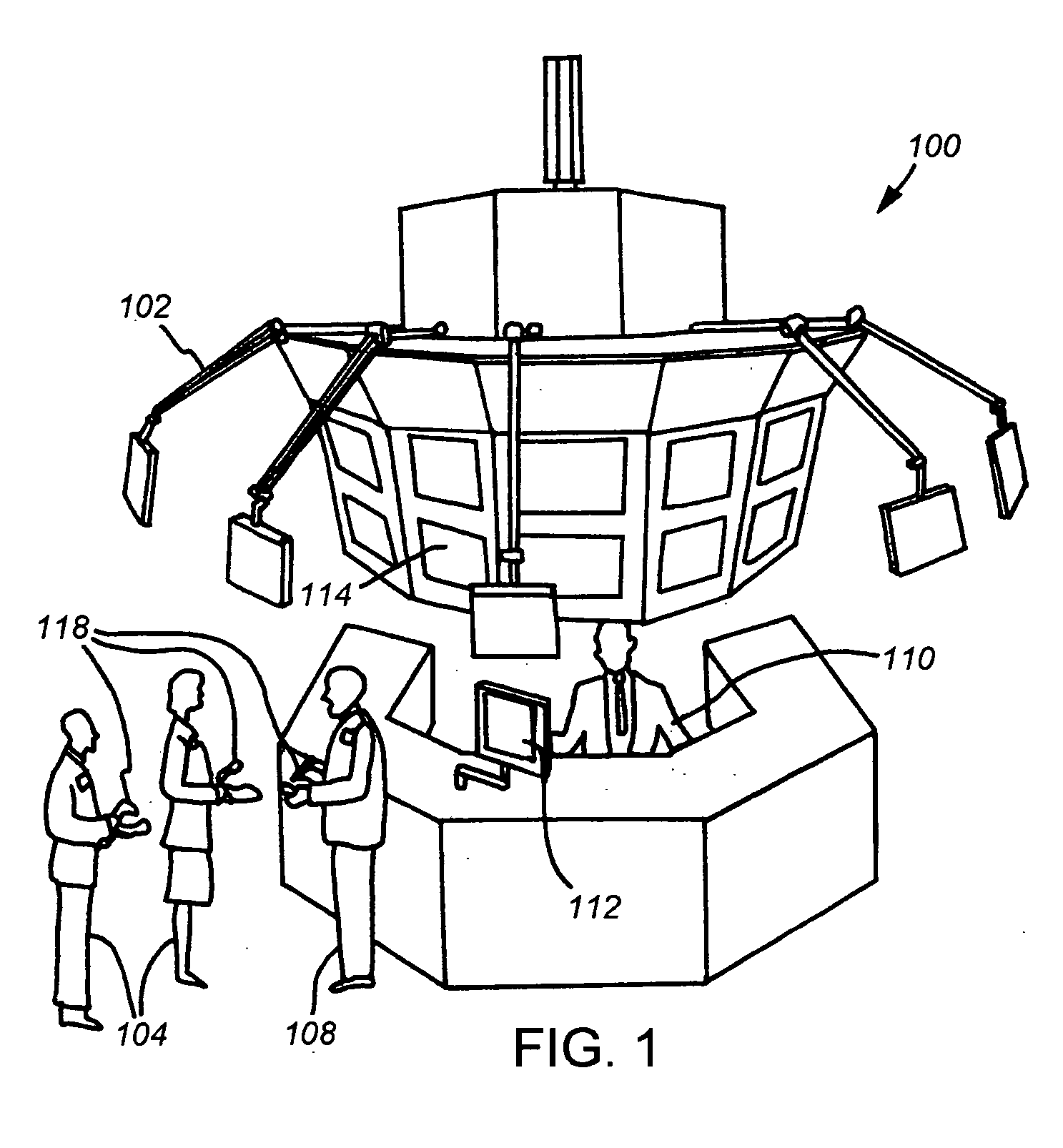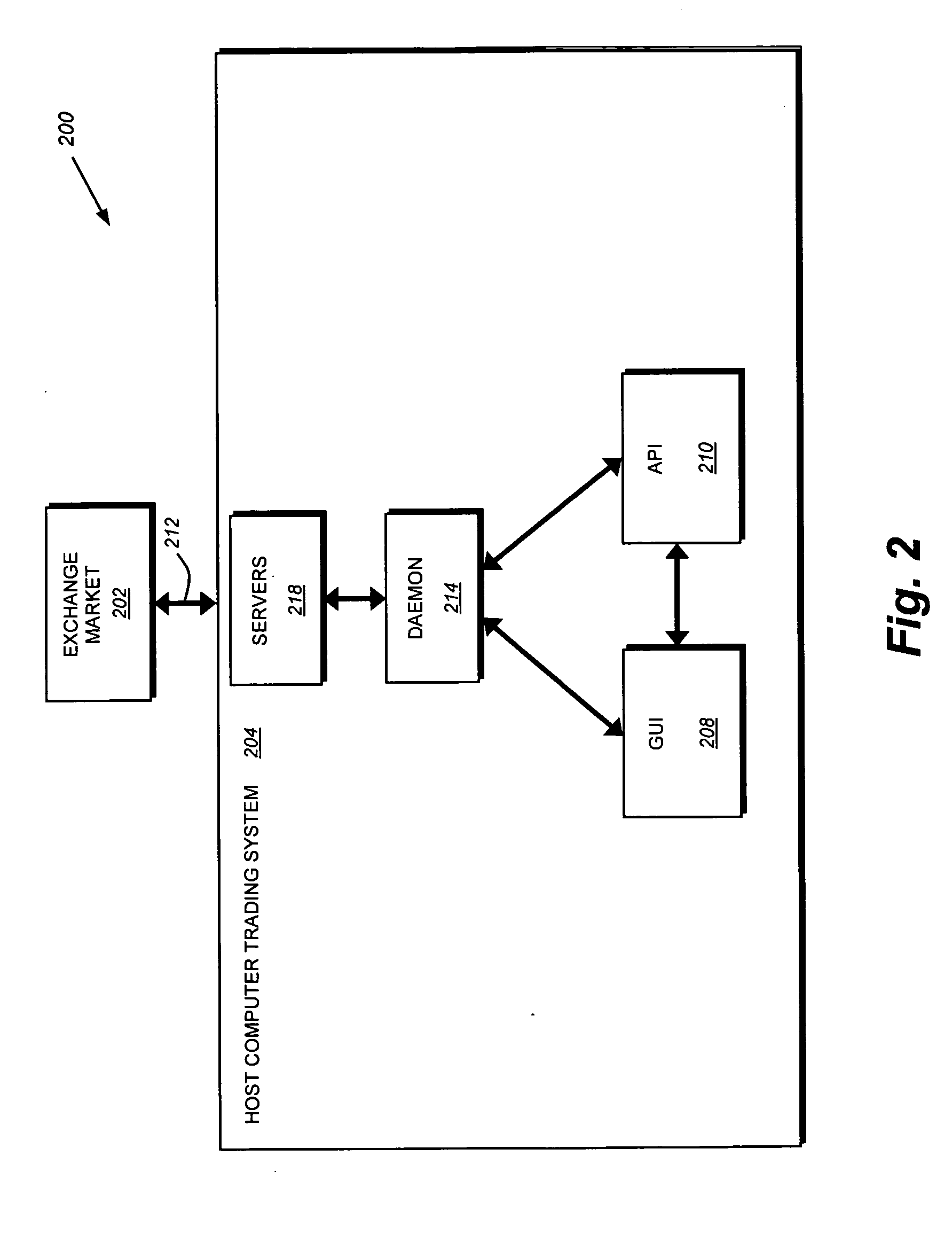User interface for electronic trading
a user interface and electronic trading technology, applied in the field of electronic trading, can solve the problems of $250 loss, remote nature of electronic trading, and inability to enjoy the latency free system of executing transactions, and achieve the effect of rapid decision-making and rapid decision-making by users
- Summary
- Abstract
- Description
- Claims
- Application Information
AI Technical Summary
Benefits of technology
Problems solved by technology
Method used
Image
Examples
example 1
[0124] Book: 100.00 / 100.01 [0125] Trade 100.02
This example shows a trade of 100.02. 100.02 is through the offer. This situation can imply an ask side trade if the trade message is early or a bid side trade if the message is late.
example 2
[0126] Book: 100.00 / 100.05 [0127] Trade 100.02
[0128] This example shows that the trade occurred in between the bid and ask prices that we have. In embodiments, we may not be able to know which side the trade occurred. It may be possible to guess by waiting for subsequent order book messages if the trade message is early or look back if the trade message was late.
[0129] An aspect of the present invention relates to compression of information relating to trades. Market data that consists of bids to buy products, offers to sell products, high and low traded prices, the last price traded, whether the last trade was to buy or sell, etc. is the vast majority of information provided by trading exchanges in terms of the volume of information provided. The set of prices that currently have buy orders combined with the set of prices that currently have sell orders for a given product constitutes the order book for that product. The numbers of different prices that currently have buy orders ...
PUM
 Login to View More
Login to View More Abstract
Description
Claims
Application Information
 Login to View More
Login to View More - R&D
- Intellectual Property
- Life Sciences
- Materials
- Tech Scout
- Unparalleled Data Quality
- Higher Quality Content
- 60% Fewer Hallucinations
Browse by: Latest US Patents, China's latest patents, Technical Efficacy Thesaurus, Application Domain, Technology Topic, Popular Technical Reports.
© 2025 PatSnap. All rights reserved.Legal|Privacy policy|Modern Slavery Act Transparency Statement|Sitemap|About US| Contact US: help@patsnap.com



